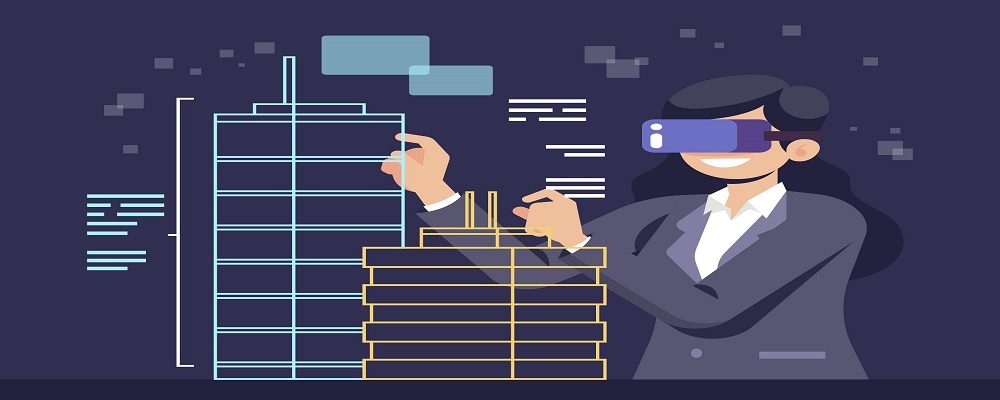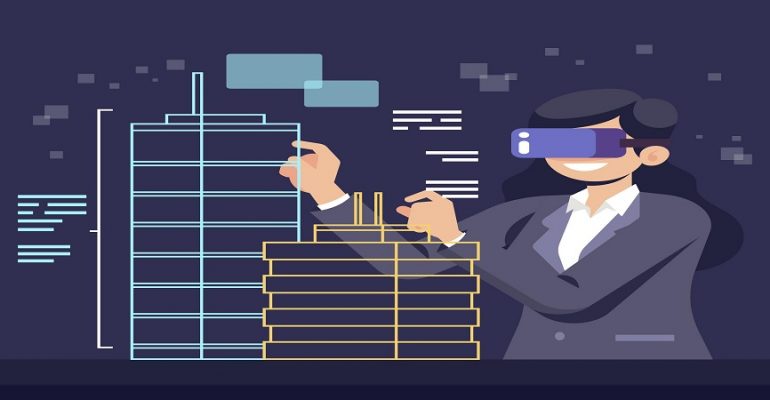
Impact of Extended Reality (XR) on Architecture

Impact of Extended Reality (XR) on Architecture
The field of architecture is undergoing a seismic shift, driven by advancements in Extended Reality (XR) technologies. XR, which encompasses Augmented Reality (AR), Virtual Reality (VR), and Mixed Reality (MR), is revolutionizing the way architects design, visualize, and present their projects. This transformation is significantly aided by AR and VR development companies, especially in tech-forward regions like India, where innovation is thriving.
Understanding Extended Reality (XR)
Extended Reality (XR) is an umbrella term that refers to all real-and-virtual combined environments and human-machine interactions generated by computer technology and wearables. This includes Augmented Reality (AR), Virtual Reality (VR), and Mixed Reality (MR). XR creates immersive experiences that allow users to interact with digital elements as if they were part of the real world, blurring the lines between physical and virtual environments.
The Role of AR and VR Development Companies
AR and VR development companies play a pivotal role in this transformation by creating advanced tools and applications tailored for the architecture industry. These companies utilize sophisticated augmented reality and virtual reality frameworks to develop solutions that enhance design accuracy, improve collaboration, and offer immersive visualization experiences.
Key Contributions to Architecture
Enhanced Visualization and Design
XR technology allows architects to create immersive 3D models that clients and stakeholders can explore. Using AR, architects can overlay digital models onto real-world environments, providing a realistic preview of how a project will look once completed. VR takes this a step further by offering fully immersive environments where users can walk through and interact with architectural designs, gaining a deeper understanding of spatial relationships and aesthetics.
Improved Collaboration
XR tools enable real-time collaboration among architects, engineers, and clients, regardless of their physical locations. By using virtual meeting spaces, teams can review designs, make changes, and resolve issues more efficiently. This level of collaboration reduces the likelihood of miscommunication and errors, leading to better project outcomes.
Cost and Time Efficiency
The ability to visualize and modify designs in the early stages of a project reduces the need for costly and time-consuming physical prototypes. XR technology allows for rapid iterations and refinements, ensuring that the final design is both functional and aesthetically pleasing. This efficiency translates to significant cost savings and shorter project timelines.
Enhanced Client Engagement
XR experiences are highly engaging and interactive, providing clients with a more tangible understanding of architectural designs. This engagement helps in securing client buy-in and approval, as they can experience the proposed spaces in a lifelike manner. Augmented reality companies in India and other regions are increasingly developing apps and tools that facilitate this level of client interaction.
Latest Use Cases in Architecture
Virtual Reality Walkthroughs
VR app development is enabling architects to create detailed virtual walkthroughs of their designs. These walkthroughs allow clients to experience the scale, lighting, and ambiance of a space before construction begins. This immersive experience helps in identifying potential design issues and making informed decisions.
Augmented Reality for On-Site Visualization
AR development companies are creating applications that enable architects and construction teams to visualize 3D models on-site using smartphones or AR glasses. This technology assists in aligning the construction process with the design, ensuring accuracy and minimizing errors.
Mixed Reality for Design Collaboration
Extended reality technology, particularly Mixed Reality, is being used to create collaborative design environments where team members can interact with 3D models simultaneously. This collaborative approach enhances creativity and problem-solving, leading to innovative design solutions.
Interactive Sales and Marketing
Virtual reality companies in India and globally are developing VR experiences for real estate marketing. Potential buyers can virtually tour properties from anywhere in the world, experiencing the layout and features as if they were physically present. This immersive marketing tool is proving to be highly effective in attracting and engaging buyers.
Conclusion
The impact of XR on architecture is profound and far-reaching. AR and VR development companies, particularly in India, are at the forefront of this revolution, providing innovative solutions that enhance visualization, collaboration, and client engagement. As XR technology continues to evolve, its integration into architecture will undoubtedly lead to more efficient, creative, and client-centric design processes. By leveraging the capabilities of extended reality, architects can push the boundaries of what is possible, creating spaces that are not only functional but also inspiring and transformative.